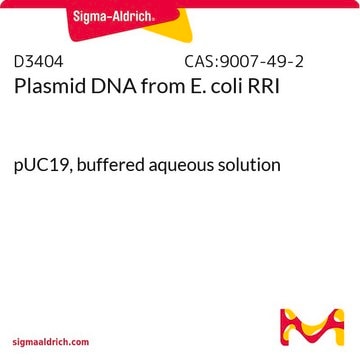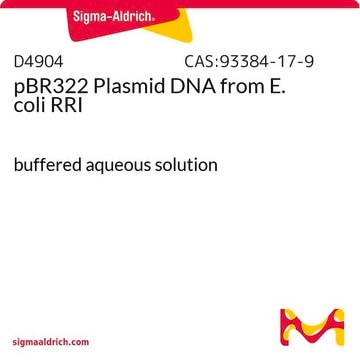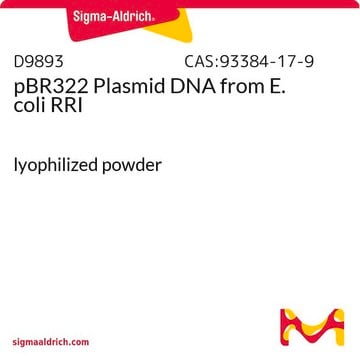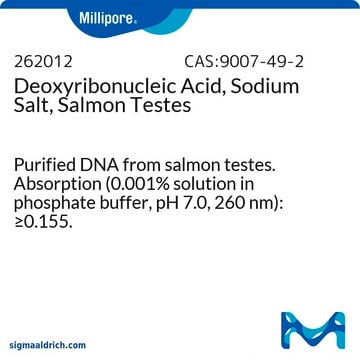D4154
Plasmid DNA from E. coli RRI
pUC18, buffered aqueous solution
About This Item
Produits recommandés
Source biologique
Escherichia coli (RRI)
Qualité
for molecular biology
Forme
buffered aqueous solution
Conditions d'expédition
dry ice
Température de stockage
−20°C
InChI
1S/C15H31N3O13P2/c16-13-1-7(20)11(28-13)5-25-32(21,22)31-9-3-15(18)29-12(9)6-26-33(23,24)30-8-2-14(17)27-10(8)4-19/h7-15,19-20H,1-6,16-18H2,(H,21,22)(H,23,24)
Clé InChI
AWBASQCACWFTGD-UHFFFAOYSA-N
Vous recherchez des produits similaires ? Visite Guide de comparaison des produits
Description générale
Application
Actions biochimiques/physiologiques
Foreign DNA inserted at the MCS abolishes the ability to catabolize lactose. Lactose-positive, ampicillin-resistant colonies (host strain containing plasmid) form blue colonies on plates containing ampicillin and X-Gal; lactose-negative, ampicillin-resistant colonies (host strain containing plasmid with foreign DNA inserted at the MCS) form white colonies on this medium. The orientations of the MCS regions in the pUC plasmids are analogous to those of the corresponding M13 phage.
Composants
Principe
Produit(s) apparenté(s)
Code de la classe de stockage
10 - Combustible liquids
Classe de danger pour l'eau (WGK)
WGK 1
Point d'éclair (°F)
Not applicable
Point d'éclair (°C)
Not applicable
Certificats d'analyse (COA)
Recherchez un Certificats d'analyse (COA) en saisissant le numéro de lot du produit. Les numéros de lot figurent sur l'étiquette du produit après les mots "Lot" ou "Batch".
Déjà en possession de ce produit ?
Retrouvez la documentation relative aux produits que vous avez récemment achetés dans la Bibliothèque de documents.
Les clients ont également consulté
Notre équipe de scientifiques dispose d'une expérience dans tous les secteurs de la recherche, notamment en sciences de la vie, science des matériaux, synthèse chimique, chromatographie, analyse et dans de nombreux autres domaines..
Contacter notre Service technique









